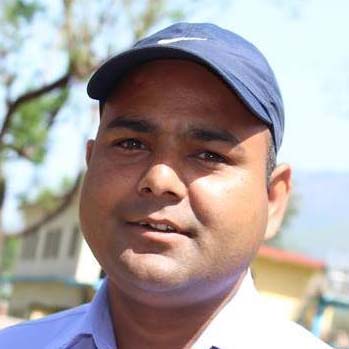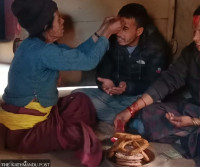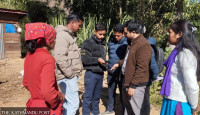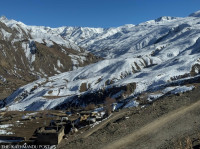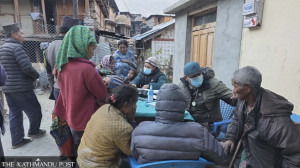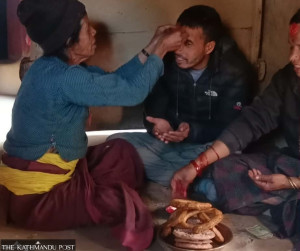Karnali Province
Detailed damage survey begins 15 months after Jajarkot earthquake
Assessment has started in Nalgad and Bheri municipalities of Jajarkot as a pilot project.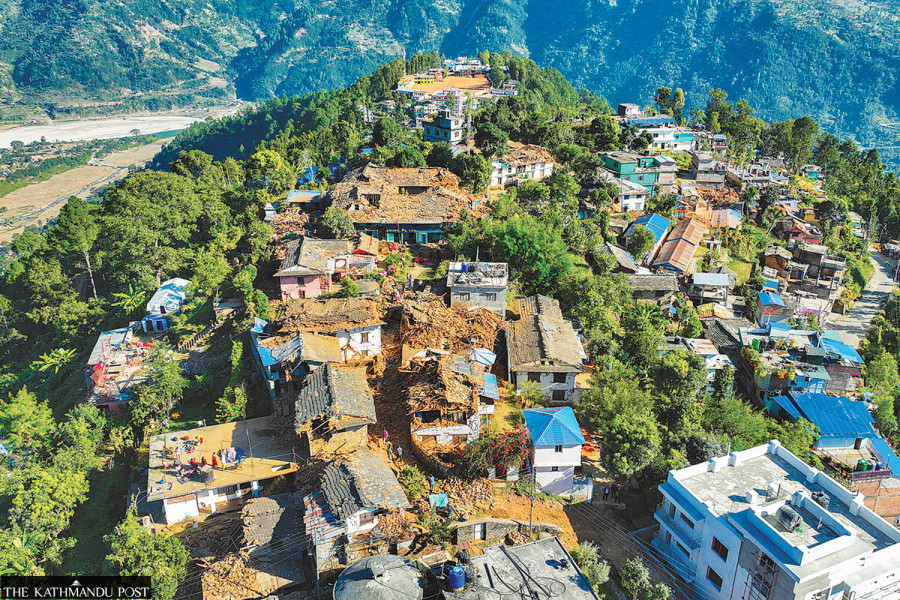
Krishna Prasad Gautam
A detailed damage survey process to assess the full extent of quake damage and destruction has finally started—nearly 15 months after the Jajarkot earthquake.
A 6.4 magnitude earthquake, with its epicentre at Lamidanda of Barekot Rural Municipality, had wreaked havoc in Jajarkot, Rukum West and Salyan districts on November 3, 2023. As per the data available at the National Disaster Risk Reduction and Management Authority (NDRRMA), around 76,000 private houses and around 600 community buildings were destroyed. The federal government has allocated Rs21 billion for the reconstruction.
On February 3, the authority signed an agreement with the Centre for Disaster Management Studies, and the Tribhuvan University’s Institute of Engineering, to carry out a detailed damage survey in the affected districts. According to Dijan Bhattarai, spokesperson at the NDRRMA, around 400 technicians will be mobilised to conduct the damage assessment survey.
He said some technical personnel from the respective local units would also be mobilised along with 19 engineers from the NDRRMA for the survey. “It takes around a month to complete the assessment survey,” said Bhattarai.
Thousands of earthquake-displaced families continue to live in temporary shelters or quake damaged houses due to the delay in reconstruction and rehabilitation of the victims. The quake victims have spent the second winter in a row shivering under flimsy huts.
A total of 157 people died in Jajarkot and Rukum West while others died due to cold and other natural disasters like floods and landslides in the aftermath. So far, 44 people living in temporary huts and tents have died while 12 quake victims have lost their lives in floods and landslides.
The federal government is yet to prepare guidelines for permanent housing of earthquake victims. According to the Temporary Housing Construction Grant Procedures for Earthquake Affected Households-2023, the government provides a total of Rs50,000 in two tranches to each displaced family whose houses were completely or partially damaged and rendered uninhabitable.
However, many victims are yet to get the second tranche of Rs25,000. Around 34,000 temporary shelters have been built in Jajarkot, 32,000 in Rukum West and 1,300 in Salyan.
Temperatures started plummeting in the earthquake hit districts from December second week. Many quake displaced people have been putting up in makeshift tin-roof huts. They vented their ire at the government for not helping them build permanent homes.
Amar Bahadur Pariyar, a resident of Thaple in Jajarkot, complained that things are getting unbearable. “Last week, my two sons suffered from a severe cold with high fever, cough, and swelling in their hands and arms. They are only now starting to recover,” said Pariyar.
“Dew drips from the tin-roofs at night. The wooden plank walls cannot protect us from the cold wind. We have been suffering a lot due to the delay in reconstruction. We don’t have money to build houses on our own, and the government has not provided any support,” he lamented.
The earthquake displaced people hope to reconstruct the quake-damaged house. “I heard that the government initiated the reconstruction process, albeit late. We will be thankful if we get a new house before the rainy season,” said Ghanashyam Mahar, a quake displaced man from ward 1 of Nalgad Municipality.
According to him, his nine-member family stayed under a tent for the first three months after the earthquake before moving to a temporary shelter.
The post disaster damage survey has started in Nalgad and Bheri municipalities of Jajarkot as a pilot project. “The reconstruction process has finally begun with the launch of this damage assessment survey. Earthquake victims are suffering. How long will they have to live under temporary huts?” questioned Dambar Bahadur Rawat, mayor of Nalgad Municipality.
According to him, there was confusion over reconstruction due to lack of a detailed assessment survey and unclear jurisdiction between local, provincial and federal governments. “All three tiers of the government should expedite the reconstruction and rehabilitation,” he added.




 19.12°C Kathmandu
19.12°C Kathmandu